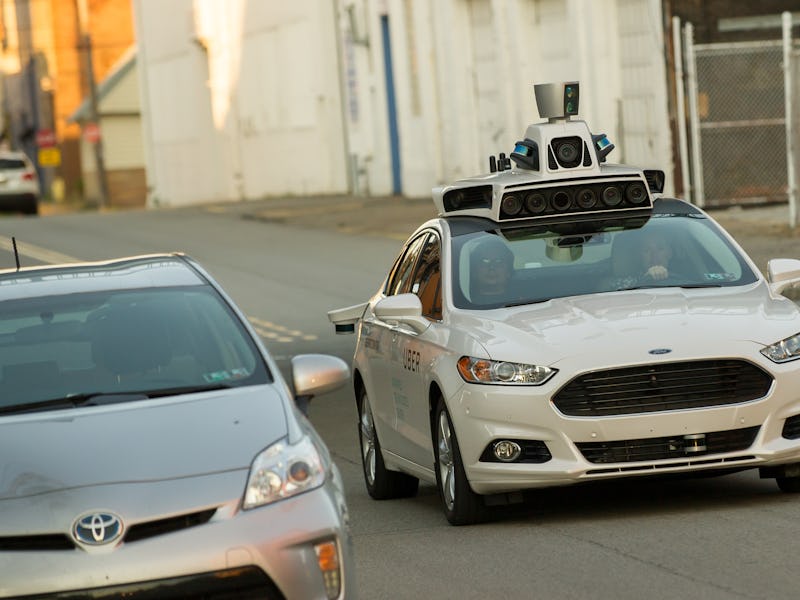According to a leaked copy of Uber’s internal test results, the ridesharing company’s self-driving cars aren’t doing so hot on the streets of Arizona: the vehicles disengaged or transferred control to their human minders at least once per mile during a one-week period. But while Uber’s leaked report might seem salacious, most of the information contained is going to come out eventually, when the car company returns to the streets in California, a state with much more strict regulations.
The review, obtained by Buzzfeed News, focused on a one-week performance review from Uber, which detailed the company’s autonomous testing in the week of March 5 in Arizona. On Scottsdale Road, a 24-mile road in the Arizona city of the same name, a human took over from the computer once every 0.67 miles. On a loop around Arizona State University, the human took over once every 1.3 miles, so overall the human was taking over from the car once every 1.49 miles.
Based on that snapshot alone, Uber’s record isn’t as good as other car makers in the game, but the company claims that takeover rates can be inconsistent from car maker to car, depending what kinds of takeovers are recorded or not.
Uber has been testing its cars in Pittsburgh and Phoenix, but is headed back to California soon, after the state with the state of California granted it a permit to test autonomous vehicles.
In California, car companies are required to produce disengagement reports, which show how many times a human driver took over from the computer. Waymo, which operates in California and so has to produce these reports, claimed that the human took over 124 times over 635,868 miles. That’s once every 5,128 miles, covering the period between December 2015 and November 2016.
John Krafcik, CEO of Waymo, debuts a customized Chrysler Pacifica Hybrid that will be used for Google's autonomous vehicle program.
An Uber spokesperson tells Inverse that it’s hard to say whether the company’s California report will look similar to the Arizona report. The problem is, autonomous car reports are fairly inconsistent, which is why comparisons can be difficult. Waymo’s disengagement report notes only safety disengagements, but Uber’s internal reports cover all disengagements. A disengagement that is expected and requested by the human driver is quite different to a disengagement done out of necessity because the car is acting dangerously.
Waymo notes that the DMV’s rules say that not every disengagement needs reporting. “This clarification is necessary to ensure that manufacturers are not reporting each common or routine disengagement,” the DMV rules state, stating that a disengagement is defined as when a human takes over because either the system has failed or safe operation requires a human to take over.
Uber’s internal performance memo gives an interesting insight into how the technology is progressing, but it’s hard to make any big conclusions from it about which company is ahead in the race to autonomy.
